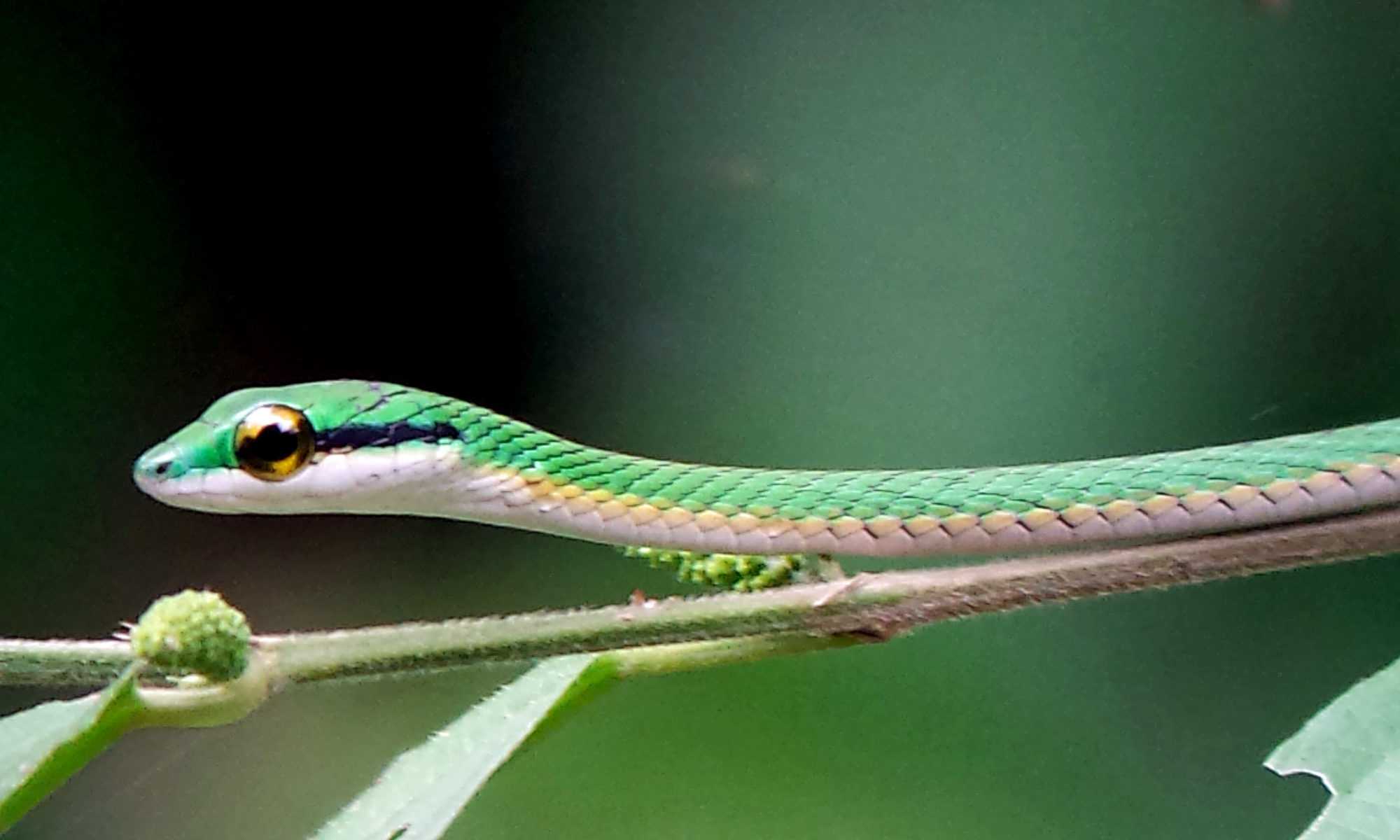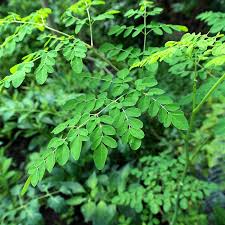Though I did not eat in a lot of local homes in The Gambia, when I did it was always eating from a common bowl of rice with something poured over it, usually some vegetable with root-vegetables in the majority, fish or more rarely chicken. But the most lasting image was the poor family that took the leaves from a certain tree called Moringa in English, boiling them in water and then pouring the mixture over the rice.
Jump forward to 2018 and I read this intriguing article in Washington Post titled “Moringa, the New Superfood?” It took me a bit to connect it with my experience in The Gambia, but was reminded of it when the author said he or a friend first became aware of it while serving in the Peace Corp in The Gambia. Kind of like me serving as a missionary in The Gambia! 🙂
Since the above link to a newspaper article may not last, I will try some other links to information about the healthfulness of the tiny Moringa leaves (and roots):
Cuerpomente (right click on page to translate to English)
6 Science-based Health Benefits of Moringa
Back-up of Washington Post Article
The first article linked above was in the Washington Post and very good, but I was afraid it will not stay forever on their site, thus I am copying it below:
Moringa, the next superfood?

There’s nothing super-looking about moringa. It’s skinny and sparse in foliage. Its fragile branches sprout puny white flowers and droop with long twisted pods knobby with seeds. But if plants were superheroes, then moringa would be Iron Man.
“If there were a top 10 list of plants that are going to help feed the world over the next hundred years, I would say moringa should be on that list,” said Carrie Waterman, a University of California, Davis, natural products chemist.
Every part of the plant is edible — leaves, pods, seeds, flowers, even its root. The feathery leaves alone pack a powerful protein punch nearly 30 percent by dry weight. Legumes don’t even have that much protein, nor all the essential amino acids.
The leaves are high in vitamins A and C, calcium, zinc, iron, magnesium and potassium. They contain phytochemicals and antioxidants that have been shown in some research studies to reduce chronic inflammation. The plant even has the potential to simultaneously treat both malnutrition and obesity.
 Bowl of harvested moringa in Rongo, Kenya at the Lawala Community Clinic. (Photo Courtesy of Carrie Waterman)
Bowl of harvested moringa in Rongo, Kenya at the Lawala Community Clinic. (Photo Courtesy of Carrie Waterman)“My first impression was that it’s too good to be true,” said Waterman, who has researched the benefits of moringa for nearly a decade. Waterman’s research on the plant led to her being a co-inventor on a patent issued to Rutgers University in New Jersey for a process to extract bioactive compounds from moringa seeds. The patent is currently licensed to Estee Lauder.
More studies are needed to assess how the plant works in the body and how its nutrients and phytochemicals affect the body, she said, but the “miracle tree,” as it is sometimes described, shows great potential as a solution for a healthful, sustainable food supply for a rapidly growing global population.
Food, supplement, medicine
The moringa tree, also known as the drumstick tree because of its slender foot-long pods, has been consumed mainly in parts of Southeast Asia for centuries.
The plant is distantly related to cruciferous vegetables like broccoli, kale and cabbage, and shares the same nutritious compounds. Its leaves, when tossed on salads or on meat, taste a bit peppery like arugula. Young pods are reminiscent of Chinese long beans, with a hint of spice. Seeds can be eaten or boiled to make salad oil. The fragrant flowers are often used to make tea.
More commonly, the leaves are dried and ground into a powder that’s added to soups, curries and stews.
“If it’s dried, it’s much more concentrated,” said Waterman. “You get a lot more of the nutrients but can certainly lose some of the heat sensitive nutrients, like Vitamin C, in the drying process.”
 Carrie Waterman talking with local communities in Singida, Tanzania that are part of an ongoing 5-year participatory project on agroecology, climate change, nutrition and social equity. They discussed the nutritional and health benefits of moringa. (Photo Courtesy of Carrie Waterman)
Carrie Waterman talking with local communities in Singida, Tanzania that are part of an ongoing 5-year participatory project on agroecology, climate change, nutrition and social equity. They discussed the nutritional and health benefits of moringa. (Photo Courtesy of Carrie Waterman)Waterman was introduced to moringa while in the Peace Corps in The Gambia, West Africa. Gambians use the leaves as a protein and iron supplement for mothers and infants. People with diabetes may chew the bitter-tasting seeds to control blood sugar levels.
Worldwide, the list of moringa’s medicinal uses is long. People have used it for everything from typhoid to toothaches.
UC Davis researchers are working to distinguish the science from the hype.
Science versus hype
Waterman has studied moringa’s anti-inflammatory benefits. Her research has found that mice fed a high-fat diet along with concentrated moringa lost weight, improved glucose tolerance and failed to develop fatty liver disease compared with those not fed moringa.
“Moringa has a high level of antioxidants and very specific molecules that help reduce inflammation, which we know is underlying a lot of the chronic health conditions including cancer, obesity, diabetes and malnutrition,” Waterman said.
Peter Havel, a professor of nutrition and molecular biosciences at the UC Davis School of Veterinary Medicine, has tested moringa in the UC Davis Type 2 diabetes rat model he developed that closely mimics diabetes in humans. Those studies found moringa delayed diabetes in rats approximately five months, which could mean a delay of 10 to 15 years for humans.
“Delaying diabetes is huge,” Havel said. “If diabetes is delayed by 15 years and you get it at age 60 instead of 45, you may not need a kidney transplant.”Delayed diabetes could also forestall a heart attack or an amputation.
So how is it that one plant can help both the obese and the malnourished? Waterman said it may be that the plant provides the amino acids and proteins to help build strong muscle and bones, while some of the phytochemicals better metabolize sugar so it’s not getting stored as fat.
A few clinical studies in India have shown moringa can reduce blood sugar and cholesterol levels, but Waterman said more trials are needed.
A healthier world
In addition to its healthful elements, Waterman sees moringa as a strategic crop in the face of global warming and rapid population growth. The world’s population is predicted to grow from 7.6 billion to about 10 billion by 2050.
It’s native to India, but moringa can grow anywhere temperatures don’t dip below freezing. It’s even drought tolerant and can grow in sandy soils. It also grows fast and can produce flowers year-round.
“We need to find the best foods that can be grown locally that are accessible and appealing to populations,” said Waterman, who is currently in Kenya helping moringa farmers increase yields. “Moringa can help us address food security.”
It may seem like a lot to ask of a little tree. But UC Davis researchers are taking the idea a step further by sequencing moringa’s genome.
 UC Davis researcher Carrie Waterman with Collins Mwenda from Botanic Treasure, Inc., a Kenyan moringa company that supplies from the Meru moringa farmers’ cooperative, at a farm in Meru, Kenya. (Photo Courtesy of Carrie Waterman)
UC Davis researcher Carrie Waterman with Collins Mwenda from Botanic Treasure, Inc., a Kenyan moringa company that supplies from the Meru moringa farmers’ cooperative, at a farm in Meru, Kenya. (Photo Courtesy of Carrie Waterman)“Like any other crop we need to have improved varieties that are nutritious, can resist disease and increase yield,” said Allen Van Deynze, director of research at the UC Davis Seed Biotechnology Center.
Plant breeders consider moringa an “orphan crop” with limited appeal and markets, like fava beans and yams. Unlike globally traded cash crops such as corn and wheat, moringa has been neglected by crop breeding programs.
But Van Deynze is adopting these orphans. He is the scientific director of the African Orphan Crops Consortium, which has as its task to sequence the genomes of 101 orphan crops, moringa among them. Van Deynze said all African crop selections are already nutritious. They’re just not productive enough.
“We’re providing genomic tools, so we can breed plants that may have more yield or that can be harvested more quickly,” he said. “We want to provide nutrition for tens of families, not one from a single farm.”
California-grown moringa
On the outskirts of Fresno, California, an increasing number of Hmong American farmers are growing a large variety of tropical crops in this temperate climate.
Among the knee-high lemongrass, taro root and Kabocha squash, Zia Thea Xiong has rows of moringa trees on his 40-acre farm. Originally from Laos, Xiong said through an interpreter that he sells the fresh leaves and drumstick seeds easily at local farmers’ markets.
 Zia Thea Xiong, a farmer outside of Fresno, CA, walks among the moringa growing on his farm. (Photo credit: Joe Proudman, UC Davis)
Zia Thea Xiong, a farmer outside of Fresno, CA, walks among the moringa growing on his farm. (Photo credit: Joe Proudman, UC Davis)“Moringa compared to other crops does very well in the Central Valley because of its drought tolerance,” said Ruth Dahlquist-Willard, a small farms and specialty crops advisor with the University of California Cooperative Extension in Fresno County.
Dahlquist-Willard is working with Xiong and other farmers to find an efficient way to dry and grind the moringa leaves into a powder. That would allow the farmers to sell year-round and tap into the growing health food market for moringa in the U.S.
“We’re not trying to compete with the international market, we’re trying to promote a higher quality locally grown produce,” Dahlquist-Willard said. “It’s the farm-to-fork idea where local farmers could market their own products.” She hopes moringa will help sustain more small family farms like this one.
Xiong has now been selling fresh moringa for four years and is trying to expand to meet demand. He raves about the benefits of moringa. While he eats it himself, he also has been feeding his small herd of goats a bunch of moringa leaves every few days for the past several months.
 Ruth Dahlquist-Willard, a specialty crop advisor with the University of California Cooperative Extension in Fresno County, inspects the leaves of a moringa tree at a farm just outside of Fresno, CA. (Photo credit: Joe Proudman, UC Davis)
Ruth Dahlquist-Willard, a specialty crop advisor with the University of California Cooperative Extension in Fresno County, inspects the leaves of a moringa tree at a farm just outside of Fresno, CA. (Photo credit: Joe Proudman, UC Davis)Xiong said the goats didn’t look good before. Their hair was unclean, and they seemed sick. But now, he beams with pride as he shows them off.
“They look nice,” said Xiong in English. “Their bodies change. They’re just healthier.”
To learn more about how UC Davis experts help feed a growing population, visit www.ucdavis.edu/food.
Disclaimers:
Carrie Waterman has occasionally served as a paid consultant to Kuli Kuli Foods.
This content is paid for and provided by an advertiser and published by WP BrandStudio. The Washington Post newsroom and WP BrandStudio were not involved in the creation of this content. Learn more about WP BrandStudio.
I received this email with more links to more info if interested:
Hi Charlie,
This is Jim from www.DailyDetoxHacks.com a few months ago I started building a Moringa Resource on my Site with lots of articles.
I am writing to you because I would like to ask you to consider linking from Your Article – https://www.charliedoggett.net/travel/africa/the-gambia/moringa-a-simple-leaf-food/ to my Ultimate Guide on Moringa or maybe to one of my 25 plus other Moringa articles.
I also have agreat infographic here – if you would like to use it – if you do please just add a link to acknowledge it came from us – I would appreciate it.

We have over 25 Articles on Moringa now and I am hoping you may find us a useful resource for your existing article or any articles in the future.
Some examples of our articles are
- How to Grow a Moringa Tree
- Moringa for Baby
- Moringa Oil for Hair
- Moringa for Scars and more
- Moringa for Men
And more than 20 other articles.
Lastly, if you would like me to help with a specific article on moringa that would benefit your site – just let me know and it would be great to work together to create a great article for your site.
Thank you for your time
Best Wishes
Dr J Kenwww.dailydetoxhacks.com
¡Pura Vida!


